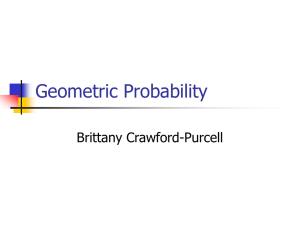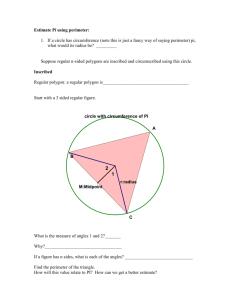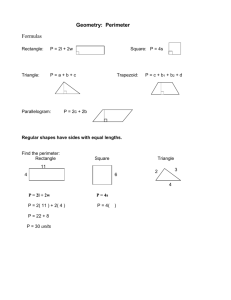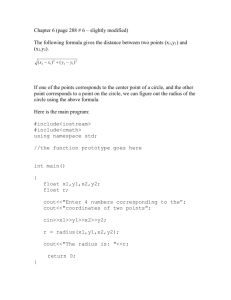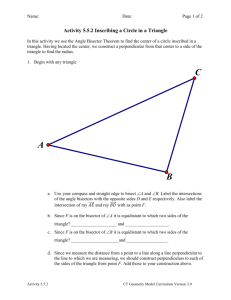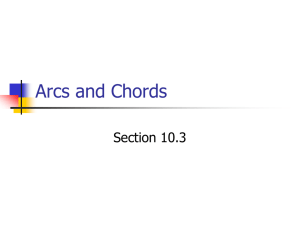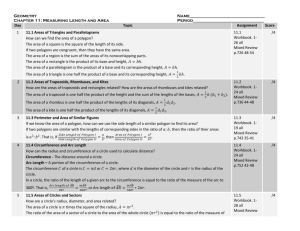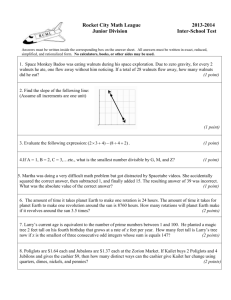area_perimeter_geogebra_worksheet
advertisement
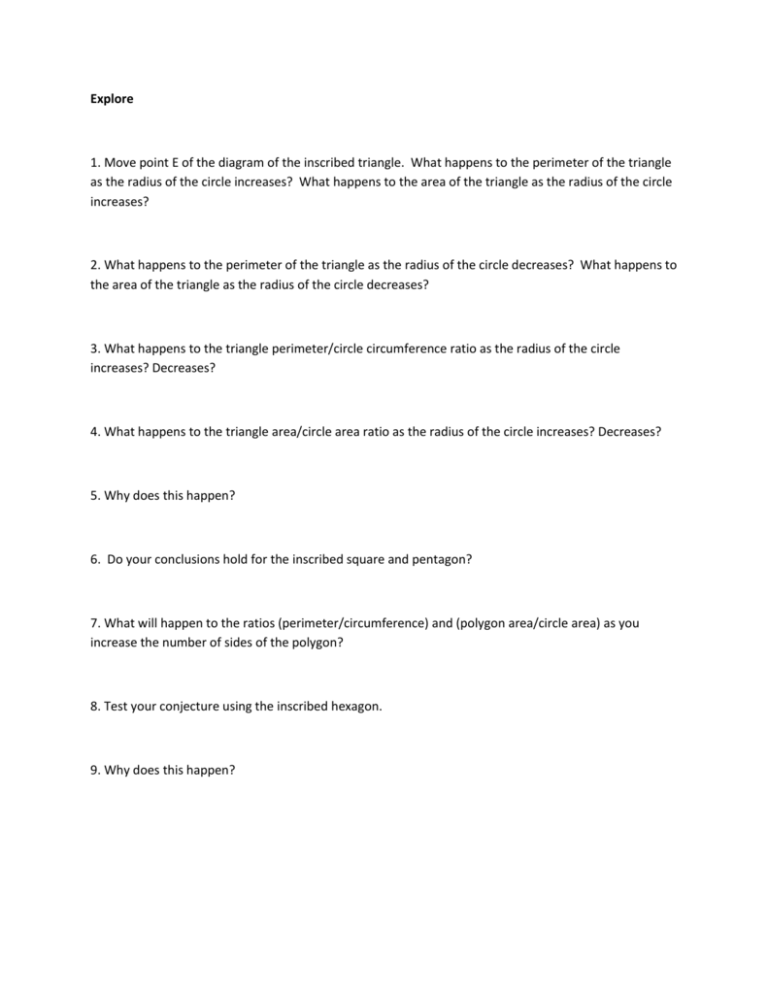
Explore 1. Move point E of the diagram of the inscribed triangle. What happens to the perimeter of the triangle as the radius of the circle increases? What happens to the area of the triangle as the radius of the circle increases? 2. What happens to the perimeter of the triangle as the radius of the circle decreases? What happens to the area of the triangle as the radius of the circle decreases? 3. What happens to the triangle perimeter/circle circumference ratio as the radius of the circle increases? Decreases? 4. What happens to the triangle area/circle area ratio as the radius of the circle increases? Decreases? 5. Why does this happen? 6. Do your conclusions hold for the inscribed square and pentagon? 7. What will happen to the ratios (perimeter/circumference) and (polygon area/circle area) as you increase the number of sides of the polygon? 8. Test your conjecture using the inscribed hexagon. 9. Why does this happen? Extend 10. How can you compare the ratio of perimeter to circumference to the ratio of the areas as more sides are added to the inscribed polygon? 11. What does this mean in terms of the perimeter of an inscribed polygon and the circumference of the circle vs. the area of the inscribed polygon and the area of the circle? 12. Estimate the perimeter and area of a polygon of 100 sides that is inscribed in a circle with a radius of 10 cm. ***expanding on a task in a “Prentice Hall Geometry” textbook by Laurie E. Bass, Basia Rinesmith Hall, Art Johnson, and Dorothy Wood
